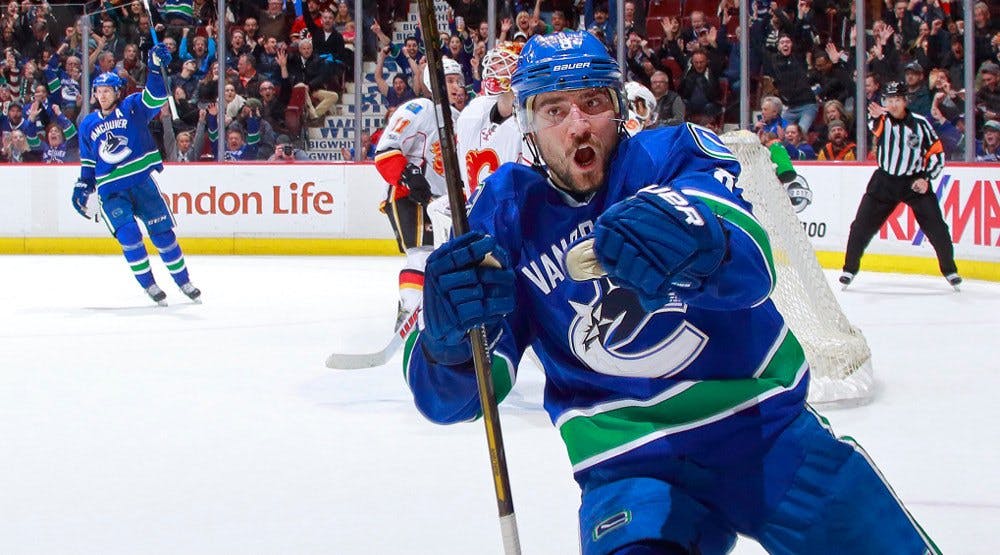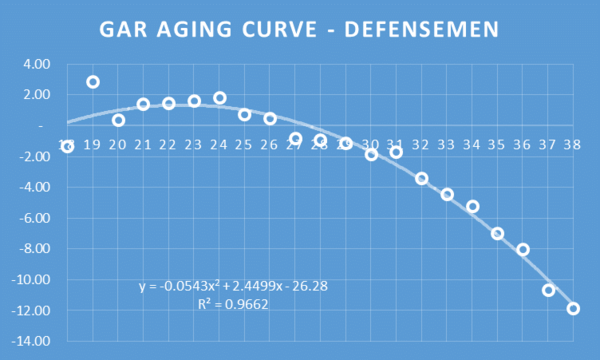Why trading Chris Tanev makes sense for the Canucks

6 years ago
Whether or not the Vancouver Canucks should trade Chris Tanev is one of the most widely discussed topics in the market.
It’s the foremost topic among fan discussions in Canucks-nation, and The Province’s Jason Botchford has already made clear his stance.
I can’t blame anyone for wanting to discuss it, though. It’s a topic worth exploring! I don’t want to be left out, though. I, too, think the Canucks should trade Tanev between the NHL Expansion Draft and July 1st, and there are a variety of reasons why, too.
At first, I opposed the notion of a Tanev trade, simply because the Canucks can’t replace what he does for the team. When I looked at the Canucks in totality, though, I realized there was an argument worth making about whether his skills would matter while the club struggled through these next few years. It’s fairly clear given the injection of youth on the way and the holes veterans will create as they age out of that picture.
With that, the Canucks are in a position where they need to accumulate assets and young talent. There is no way around this. Any other course of action would just result in prolonging the club’s futility. Even if they catch lightning in a bottle, the success will be short-lived and unsustainable.
Now that I’ve clarified my reasoning, it’s clear that Tanev is the Canucks’ most valuable trade chip to aid with their rebuild. Yes, trading him will create an immediate hole in their lineup. When the trade benefit is so significantly positive for the long-term future of the Canucks, though, surely it’s worth sacrificing an extra one or two wins next season.
Before we get too far ahead of ourselves, it’s worth mentioning that the best time for the Canucks to execute this trade would be after the Expansion Draft. Any earlier and the list of teams that can acquire Tanev shrinks based on them not having the space to protect him. If the Canucks bear the burden of protecting Tanev, and then make the move during the 2017 NHL Entry Draft, the market opens up significantly.
Chris Tanev’s Age
This is the most important part of this whole discussion. Tanev’s age and how that relates to where the Canucks are now, and where they will be in a couple of years.
With the Canucks falling to fifth overall, the player that they will ultimately select won’t be making the roster next season. Tanev will be 28-years-old in November. Assuming that this upcoming season will be another tough grind, that pushes him another year older. Former Canucks Army writer Cam Lawrence did a post about ageing curves for NHL players, and it’s important to look back on it here.

Tanev is starting that downward trajectory on the ‘Goals Above Replacement’ at the age of 27. With the mean being at 28.5, Tanev would be there to start the 2018-19 season.
Under the assumption the Canucks aren’t playoff bound next year, this isn’t just my suggestion, and then assuming the Canucks will struggle to get into the playoffs in 2018-19. Heading into the 2019-2020 season, the Canucks would have a 29.5-year-old defenceman, with one year left on his deal. Maybe they squeeze into the playoffs then, but then they risk losing Tanev for nothing.
Obviously, things change, and a lot can happen in that timeframe, but it’s clear the Canucks’ curve as a team will not coincide with Tanev’s as a player.
Contract and NTC
As much as fans criticize Jim Benning for his contract work over the last few years, the Tanev contract was a tidy bit of business. Tanev will be entering year three of a five-year deal that pays him $4,450,000 per season. That is currently the 59th highest cap hit for defencemen in the NHL and represents 6.1% of the current salary cap of $73-million.

A modified no-trade-clause (Tanev can list eight teams that he will not accept a trade to) kicks in on July 1, 2017.
That NTC isn’t a huge burden, as the Canucks would still be able to trade him to 22 other teams. But it’s still something to be cognizant of all the same.
This contract is very palatable for any team looking to add a shot suppressing defenceman. If a team is close to the cap, they could fix that by sending the Canucks a player with salary of some sort to help even it out.
All of this to say, the contract and NTC won’t be a problem for the Canucks, if they are motivated to make a move.
Trade Market
Just to make it clear, we are not privy to who might have interest in Tanev. Nor are we aware of who would be available in exchange for Tanev. We can, however, make conclusions based on the information available to us. There will be a market.
The first team would be the Tampa Bay Lightning:
Not suggesting Tanev for Jonathan Drouin, but the Tampa Bay Lightning will be looking for a top-four defenceman. But Tampa Bay has a slew of prospects that the Canucks should have interest in, and the Tanev contract is very digestible despite Tampa running into cap issues. Lightning general manager Steve Yzerman acquired Brayden Coburn for Radko Gudas, a first round pick and a third round pick. That seems like a fairly comparable price, with Tanev being younger then Coburn was, and Tanev being the superior shot suppressing defenceman.
Toronto will be looking to add a defenceman to take the next step. Like Tampa Bay, they have a bounty of prospects that the Canucks would be wise to acquire. After locking up Nikita Zaitsev this past week, they are looking to add to their D core:
Those are the two most obvious fits, but one could make an argument for countless other teams. Buffalo could use an upgrade on the backend. There could be other teams in the East and, of course, some teams in West. Dallas comes to mind if the Canucks are willing to eat a bad goalie contract.
If you think there isn’t a market, you are wrong. If the Canucks put Tanev on the block, there would be multiple teams kicking tires and gauging the cost.
Benefit to Canucks
By realizing this move needs to be made, just like the Jannik Hansen trade, the Canucks accumulate further assets in the 18-23 range. That would coincide with the current group. Not all prospects work out, no matter how promising they are. By accumulating as many picks and prospects in that same age group, it increases the chances of hitting big.
Assuming the Canucks don’t take on another contract in the deal, it opens up cap space to allow the Canucks to make further adjustments. Whether that is trading for a contract with a prospect/pick from a team, like Arizona did this summer, or signing players to one-year deals with hopes of flipping them at the deadline.
It gives them more flexibility.
Tanev presents the most valuable asset that the Canucks could move. The market is also it’s highest for defencemen, and Tanev would provide the Canucks with multiple assets to move forward with in their rebuild.
Downsides of the Trade
The downside of making the trade is that the Canucks will be really bad. Even worse than they were last season. As I mentioned off the top, being opposed to the Tanev trade is defensible and something I thought prior to the deadline.
If Tanev were to be moved and Luca Sbisa is taken in the expansion draft, suddenly the defence is looking a little bare.
Losing the Toronto native would hurt from a leadership perspective. Tanev is now a veteran of 348 NHL games and would be a good mentor for someone like Olli Juolevi.
But with the Canucks heading down the path of a rebuild now, those downsides would be short-lived, and the benefits far outweigh them.
Conclusion
Given the Canucks have finished 28th and 29th over the last two years, everything needs to be reviewed. That includes trading veterans. That process started in February with the departures of Alex Burrows and Hansen and needs to continue. It’s unfortunate that Tanev, a 27-year-old defenceman, may be the only that has to move. But the ultimate goal is to win a Stanley Cup and unless the Canucks can make magic happen very quickly, moving Tanev will actually get them on step closer to that goal in a couple of years, rather than the status quo.
The reasons for moving Tanev:
- Good trade market
- Current state of team
- Aging curve
- Multiple future assets
Those outweigh the short-term pain of this upcoming season.
It would provide the Canucks with some flexibility going into the off season and next year to have the ability to add other pieces.
This move is not about throwing the towel in for next season; it’s about adjusting the construction of the team and leveraging your best moveable asset for multiple pieces. It also opens up a whole world of possibilities with cap space that could be used for signing players to one-year deals to flip for other assets or targeting players in trade.
If the Canucks were to walk into the 2017 NHL Entry draft with multiple first and second round picks, the long term benefit of a Tanev trade would be present as early as their development camp in July.





